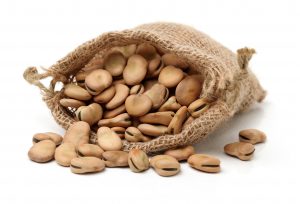Written by: Dr. Jacquie Jacob, University of Kentucky
Faba beans are grown in several countries, and their cultivation is especially common in the Mediterranean. The nutrient content of faba beans make them seem like a suitable substitute for soybean meal, but the presence of antinutritional factors in the beans has limited their use in poultry diets.

Tannins were long the main antinutritional factor in faba beans, but breeding programs have succeeded in reducing tannin content. Such programs have also improved winter hardiness, resulting in tannin-free winter cultivars. Additional procedures have been developed to eliminate or inactivate other antinutritional substances. Such procedures also alter the starch structure of the beans so that digestive enzymes have better access to the starch granules in the beans. One such method is micronization, a brief, high-temperature process that involves infrared electromagnetic radiation.
In broiler diets, dehulled, micronized faba beans can replace soybean meal up to a maximum of 30% of the diet with no adverse effect on broiler growth or meat quality. Inclusion of faba beans in the diets of laying hens causes a reduction in laying performance and increases the occurrence of blood spots in eggs. For this reason, faba beans should not be fed to laying hens.
Faba beans also contain vicine and convicine, two factors that have been implicated in the development of favism disease in humans. Favism is an acute anemia caused by exposure to faba beans. Over 100 million people worldwide lack a particular enzyme in their red blood cells. People whose red blood cells are deficient in this enzyme appear to be more resistant to the detrimental effects of malaria. As a result, this condition is not normally found in populations with no historical exposure to malaria. Susceptible people can be exposed by either inhaling the pollen of faba bean flowers or by eating the beans.

